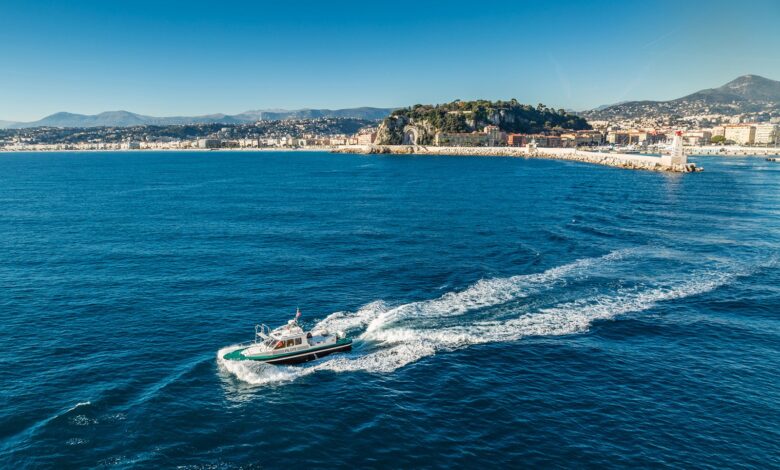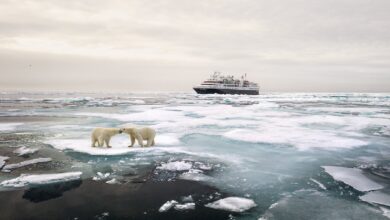What are cruise ship pilots, and what do they do?

If you’ve sailed on a cruise ship of any size, you’ve probably seen pilot boats pull alongside the vessel, and you might have watched curiously as one or two people climbed onto the ship via a rope ladder. Have you ever wondered who these people are and what they do once they’re on board?
They are marine or ship pilots, experts on the waterways and ports you are entering or leaving. They come aboard to safely guide your cruise ship into and out of the harbor.
For cruise news, reviews and tips, sign up for TPG’s cruise newsletter.
To learn more, TPG chatted with two experts in the industry. Clayton L. “Clay” Diamond is the executive director-general counsel of the American Pilots’ Association, whose pilots are responsible for handling over 90% of the larger ocean vessels (cruise ships and cargo vessels) in international waters. We also spoke with Edouard Petitson, Norwegian Cruise Line’s port captain director. Based at Norwegian’s Miami headquarters, Petitson is responsible for many port-related matters, including pilotage.
Diamond and Petitson gave us the inside scoop on what happens once a cruise ship pilot is on board and how they interact with the captain and crew to help them safely navigate the ship into or out of port.
What does a cruise ship pilot do?
In ports in the U.S. and around the world, a pilot boards the ship 10 to 20 miles offshore via a pilot boat, which can be anywhere from 65 to 100 feet long. While on board, the pilot gives orders to the captain or helmsman regarding the best way to steer the ship to navigate the offshore channels and waterways until the cruise ship docks.
Marine pilots also pilot vessels from the dock to a “pilot boarding area,” where they transfer to the pilot boat. The pilotage can be as short as two to three hours or as long as eight to 10 hours.
Alaska has a different situation since cruise ships sail so close to the shoreline and icebergs during nearly all their transit. Vessels sailing in these waters will typically be under pilotage the entire time by using two pilots. This type of piloting arrangement is typical in places like Glacier Bay National Park and Preserve.
What qualifies a pilot over the ship’s captain to direct a ship into port?
“Marine pilots are the most highly trained mariners in the world,” says Diamond.

Daily Newsletter
Reward your inbox with the TPG Daily newsletter
Join over 700,000 readers for breaking news, in-depth guides and exclusive deals from TPG’s experts
After many years of working in the maritime industry as a pilot apprentice and training in the waterways where they work, they are experts in their ports. Ship pilots must be able to chart the pilotage ground from memory, including the channel, landmarks, docks, buoys and any hazards to navigation.
“A pilot also has comprehensive knowledge of the local environments such as the hydrographic, wind and currents and tidal conditions,” Petitson adds.
Ship captains who sail into different ports around the world do not have the comprehensive knowledge and training that marine pilots do in one specific port. Essentially, marine pilots are maritime specialists in their port of expertise.
Related: How is cruise ship speed measured, and how fast is a knot in miles per hour?
Does every port have a pilot?
There are only a handful of ports in the world where pilotage isn’t mandatory. In Miami and all U.S. ports, pilotage is compulsory and provided by local pilots for all inbound and outbound ships.
A state regulatory board oversees the number of pilots needed in each port. The board determines the number based on the port’s shipping and cruise traffic. The goal is to have enough pilots working to avoid delays.
What happens in foreign ports? Do all pilots have to speak English?
All pilots around the world are required to speak English.
“In certain destinations where English is not the primary language,” Petitson explains, “the pilot can communicate in their native language with other ships in the channel, traffic control and other pilots to eliminate possible misunderstanding, especially in an emergency situation.”
Related: Boat vs. ship: What’s the difference? The annoying mistake some cruisers keep making
If the pilot and captain disagree, who has the final say?
The captain is always in charge of the vessel and the safety of the crew and passengers as the cruise ship is navigated into or out of port. If a disagreement arises, the captain will take over navigation until the situation is resolved.
Is the job dangerous?
If you’ve watched videos of pilots boarding ships by ladder, or have seen them jump from a moving ship to a pilot boat alongside, you’ve probably wondered how safe the process is.
Diamond tells us that the ladder has been deemed the safest way to board and disembark ships. The American Pilots’ Association focuses on safety and routinely works with the U.S. Coast Guard and the International Maritime Organization to improve and enhance the regulations for the ladders and pilot transfers. However, eight marine pilots have been killed since 2006.
Related: Are cruises safe? Here’s what you need to know about cruise ship security and safety
How do you become a cruise ship pilot?
Individuals interested in becoming a ship pilot, or a pilot candidate, typically attend the United States Merchant Marine Academy in Kings Point, New York, or one of the six state maritime academies in the U.S. After completing the program, a pilot candidate will spend anywhere from eight to 14 years on ships to gain firsthand experience at sea.
Once they have earned their master’s credential, they can “master” a ship or become a captain. It’s usually during this time when a candidate enters a pilot apprenticeship program, which can take up to seven years to complete. Becoming fully licensed, where an individual can pilot the world’s largest ships, can take an additional four to five years.
Are there many female marine pilots?
No. The number of female pilots with an unlimited tonnage master’s credential is .01% overall. The number of female pilots in the APA is 4%-5%. Diamond tells us that the number is considerably better than what you’ll find in most other countries, but the APA would like it to be higher.
Bottom line
When you see that small pilot boat pull next to one of those giant cruise ships, you now know that the person coming on board to guide that ship safely into port has spent decades in education and training — and most of their career has been spent learning to expertly navigate one specific port. You can feel safer knowing that your captain can rely on a local expert to help guide the ship into or out of port.
Planning a cruise? Start with these stories:




